Web3 Game Development History
Since 2013, Web3 games have come a long way over the past ten years. During this period, Web3 games have gradually moved beyond their initial stages and entered a growth trajectory with improved playability and immersion. At the same time, they have rapidly narrowed the gap with traditional games in terms of storytelling and character development. As of August 2023, the development of global Web3 games can be divided into the following stages:
- 2013 - 2016: Exploration and Incubation Period --------------------
Tracing back to 2013, developers proposed the integration of blockchain and games and made some attempts, but this track failed to attract enough attention. In 2014, sandbox games like BitQuest and mining games like Huntercoin entered the users' field of vision.
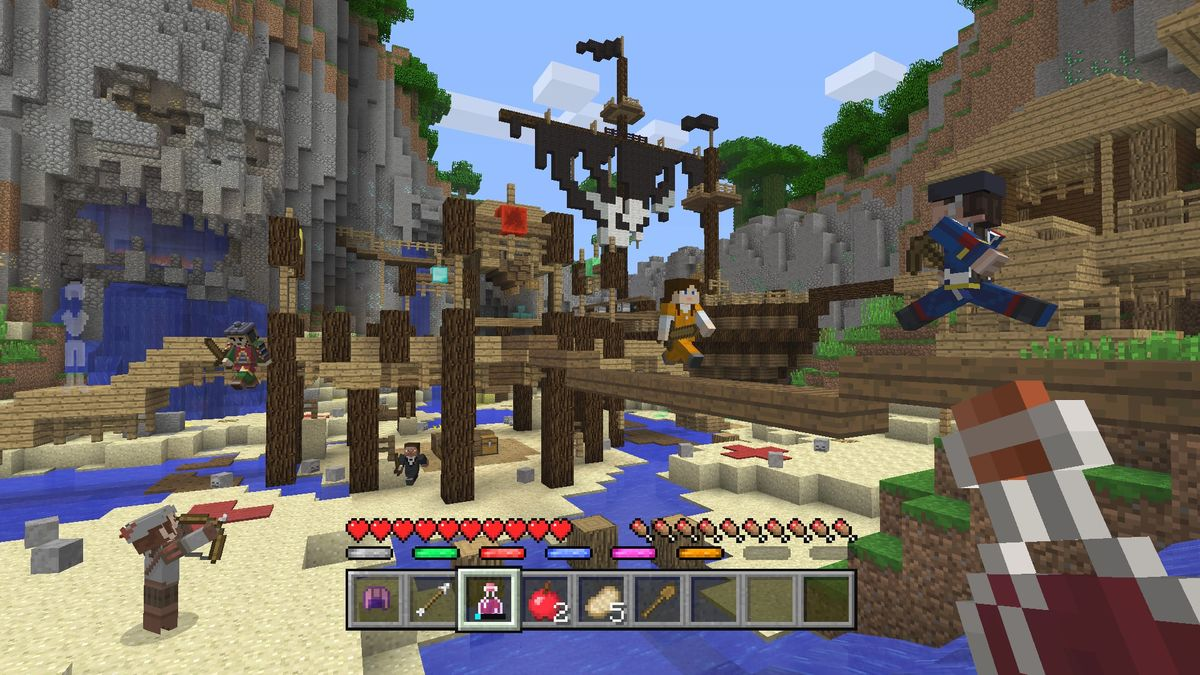
Source: CoinPedia
Developers combined the sandbox gameplay of "Minecraft" with BTC in BitQuest, allowing players to earn, use, and trade BTC through monster hunting and trading within the game. Compared to previous games, the innovation of BitQuest lies in the integration of cryptographic tokens into the game, representing an innovative attempt to combine games with blockchain in the early stages of the blockchain industry. Although the game's lifespan and player lifespan were relatively short, it accumulated valuable experience and lessons for subsequent game developers.
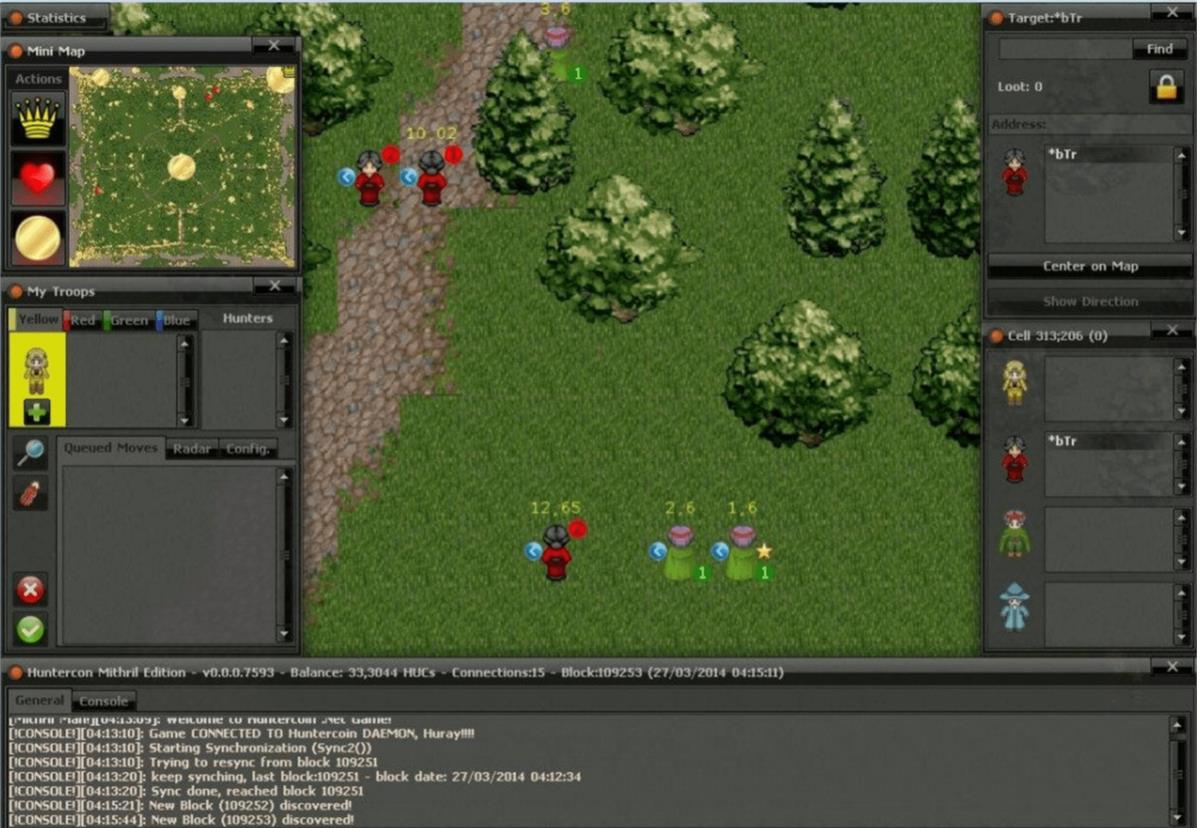
Source: NewsBTC
Huntercoin is a large-scale multiplayer online (MMO) game. The gameplay involves controlling hunters to collect coins, with four colors representing hunters from different tribes located in the four corners. When encountering hunters from other tribes, players can choose to "eliminate" opponents to collect treasures. Running on a Namecoin blockchain branch, Huntercoin allows players to "mine" cryptocurrency in the game world and deposit the cryptocurrency into several randomly generated "banks," essentially serving as a cryptocurrency wallet, presenting a new approach for game wallets in the metaverse context. Huntercoin was initially an experimental live test to understand how blockchain technology handles fully functional game worlds.
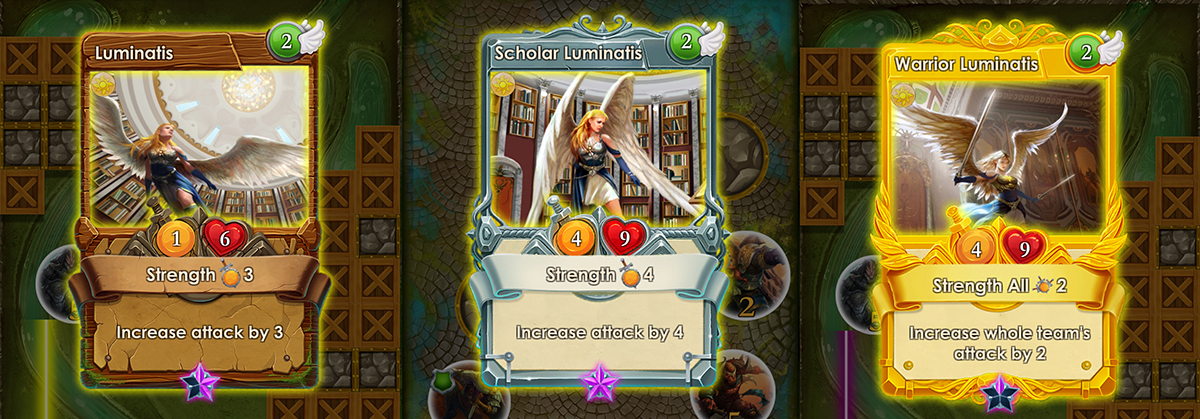
Spells of Genesis (SoG) is a game that has attracted attention for combining blockchain-based puzzles with fantasy RPG mechanics. Due to the elements in the game cards, it is also described as a collectible card game (CCG). Spells of Genesis can be played on iOS or Android devices, as well as on PC. SoG combines the features of trading card games (TCG) with arcade game shooting aspects. Players must collect and combine cards to create the most powerful deck for battling enemies. Collect, trade, and match orbs to build the strongest team and challenge multiple opponents while exploring the fantasy realm of Askian.
However, due to various issues such as insufficient infrastructure, poor playability, and low-quality game content, games in this exploration and incubation stage suffered from low player retention and consumption, ultimately falling into a death spiral.
- 2017 - 2020: On-chain Game Embryonic Period ---------------------
During this stage, while maintaining the digital asset ownership of players, the playability and sustainability of various on-chain games continued to improve. In this embryonic stage of on-chain game development, several Web3 games attracted the attention of gamers and gradually generated a network effect, attracting some traditional users to enter. The following are brief analyses of several representative games in this stage.
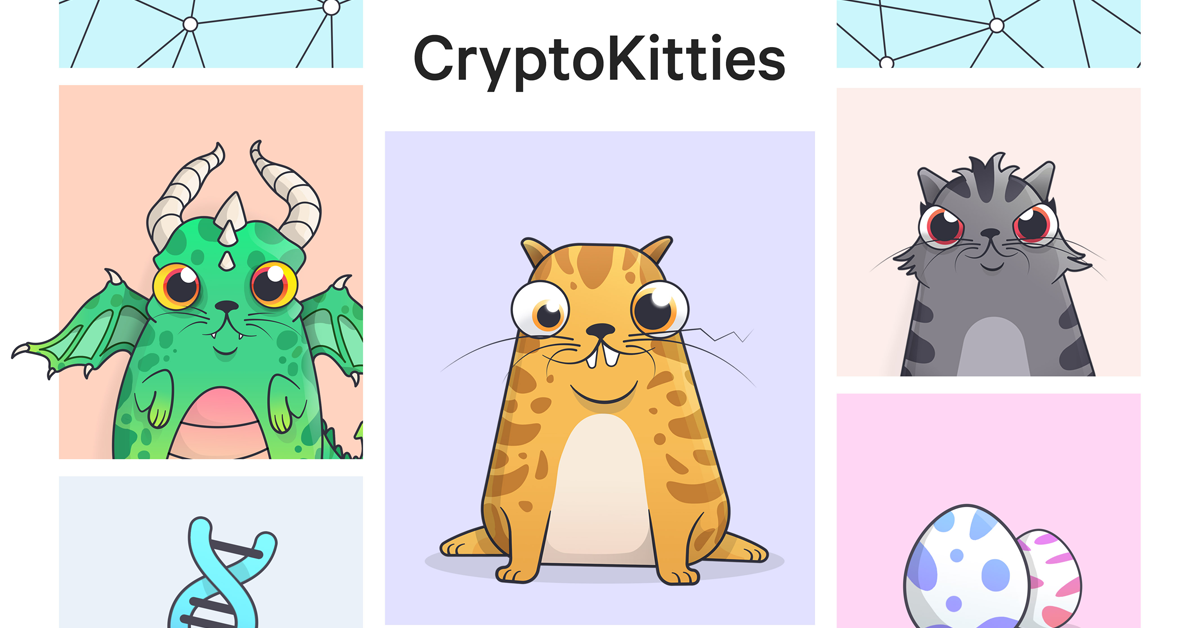
CryptoKitties is a DApp developed on Ethereum, where purchases require Ether (ETH) to buy or breed. The gameplay of CryptoKitties is simple: players can adopt (only for early users) or purchase cats, name their owned cats, buy, sell, and breed them. Trading cats became a distinctive feature of CryptoKitties. Based on blockchain, CryptoKitties players worldwide can freely trade their cats. The game team releases a new breed of digital cat every 15 minutes, and the future price of the new breed is expected to rise. If two digital cats are bred, their offspring will inherit their respective 256-bit genome, affecting appearance, personality, and characteristics, with a total of 4 billion possible variations.
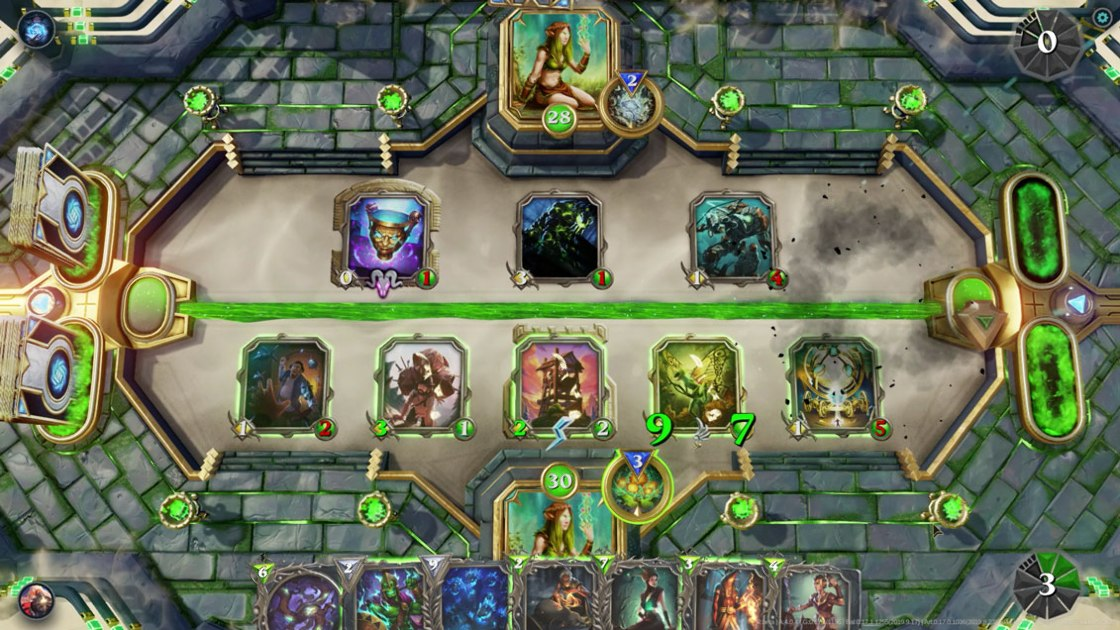
Source: Balthazar
Gods Unchained is a turn-based card game released in 2018, with gameplay and style similar to Hearthstone. The game runs off-chain, while the cards are on-chain game assets. To reduce transaction gas fees, most Gods Unchained cards have migrated to the layer-two solution Immutable X. Gods Unchained is one of the relatively active card games in terms of users and transactions on the Ethereum blockchain.
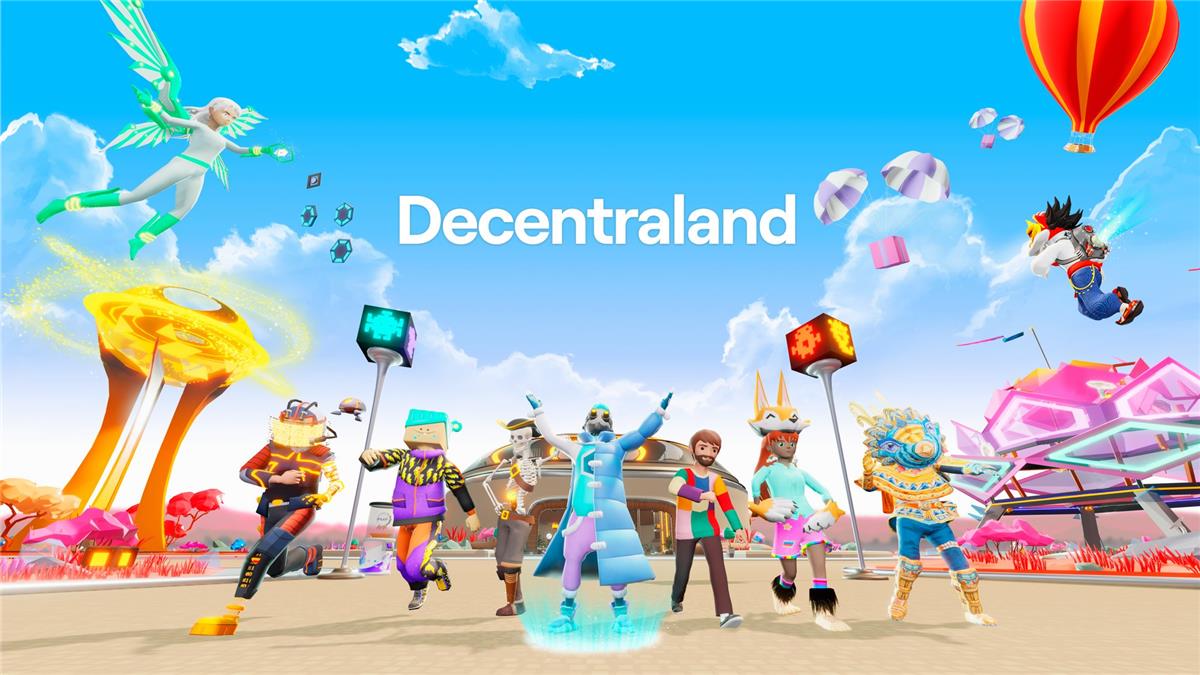
Decentraland, driven by blockchain technology, is a virtual game world. Players can create their avatars in Decentraland and engage in various in-game activities such as shopping, traveling, land purchase, meeting other players, and conversations. As a user-generated content (UGC) game, players' ownership of in-game assets is recorded on the Ethereum blockchain, becoming the player's personally held private assets. After owning their virtual land, players can build structures, establish brands, and even sell NFT goods on it.
In this stage of games, Web3 games have drawn on many experiences and lessons from traditional games, gradually exploring various gameplay aspects and increasing the confidence of Web3 game users in Web3 games. Although there is still a significant gap between Web3 games and traditional games in terms of artistic quality and content production, for developing Web3 games, they have crossed the development gap and formed a positive development trend.
- 2021 - Present: Liftoff Stage of Web3 Games ----------------------
Since 2021, despite some detours in economic models and other aspects, Web3 games have shown significant exploration and progress in many areas. Some Web3 game projects have demonstrated a network effect, attracting a large number of Web2 game users. For example, the Move To Earn app StepN recorded over 67 million miles (108,017,738 kilometers) of physical activity on the app, reaching a historical peak of 1 million users on June 2, 2022, with a total of 4.72 million registered users. Specific case analyses are as follows:
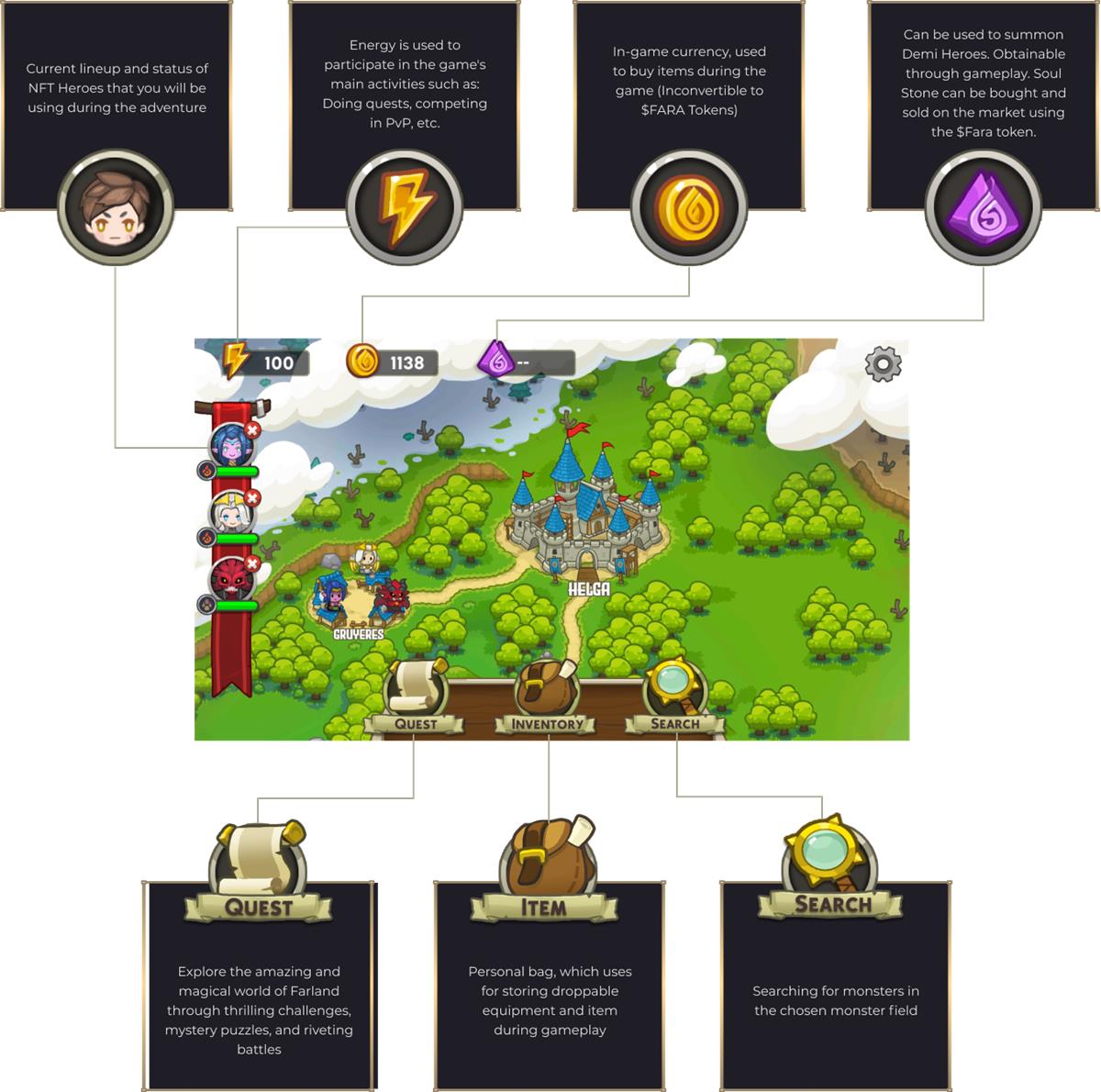
Faraland is a role-playing strategy war game for Android and iOS, developed on the blockchain by MoonKnight Labs, a company based in Vietnam. Players control characters from 7 races: humans, orcs, elves, fairies, dragon descendants, angels, and demons—each race has different abilities, strengths, intelligence, and agility, and they battle other players in a universe called Faraland. The game was released in the fourth quarter of 2021.
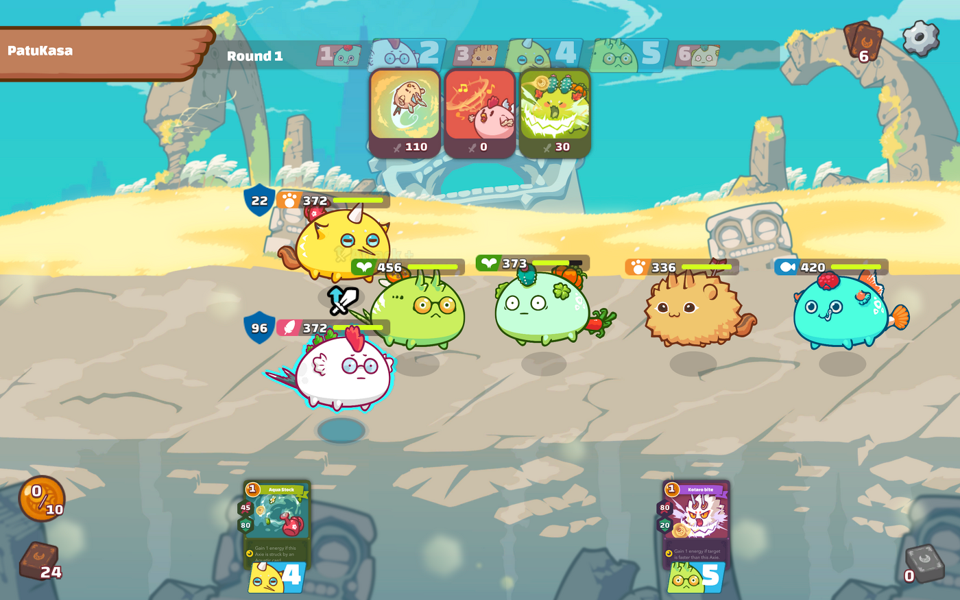
Axie Infinity is a video game that includes customizable fantasy creatures that players can train for battle. Each Axie is a cute pet in the game, with over 500 customizable body parts for players to enjoy. Players can create an unlimited number of combinations and adjust their battle strategies. Axie Infinity was founded by the Vietnamese startup company Sky Mavis and is one of the most popular Web3 game projects.
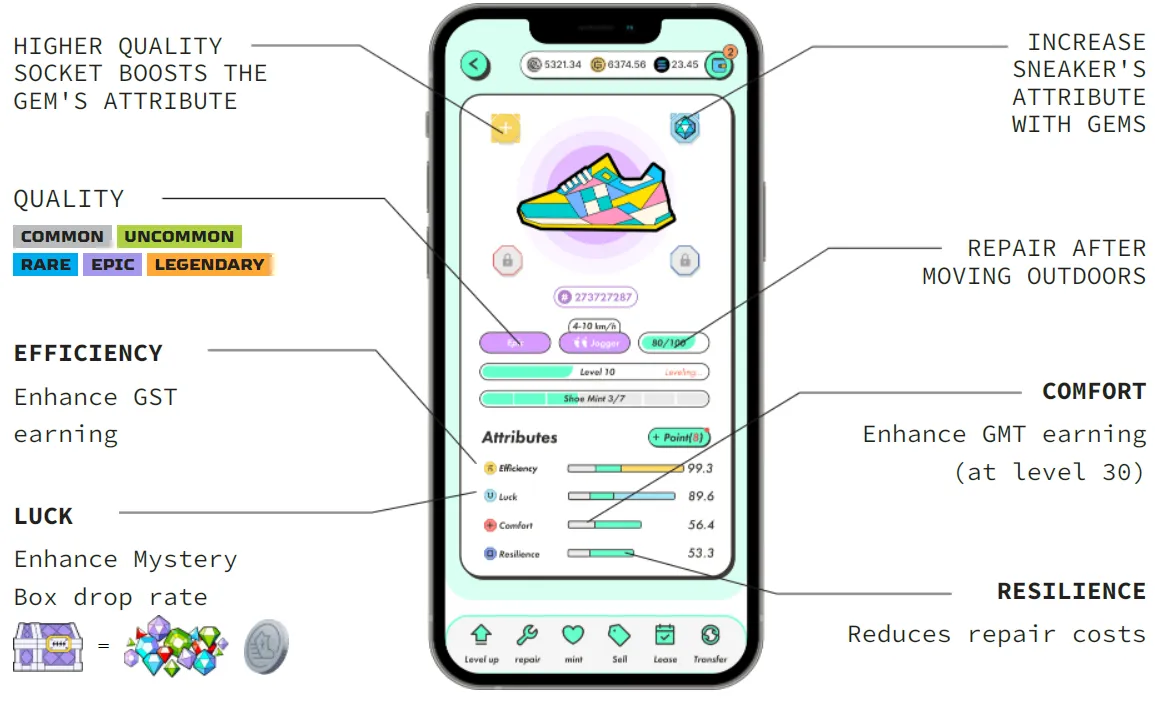
Source: Mediaverse
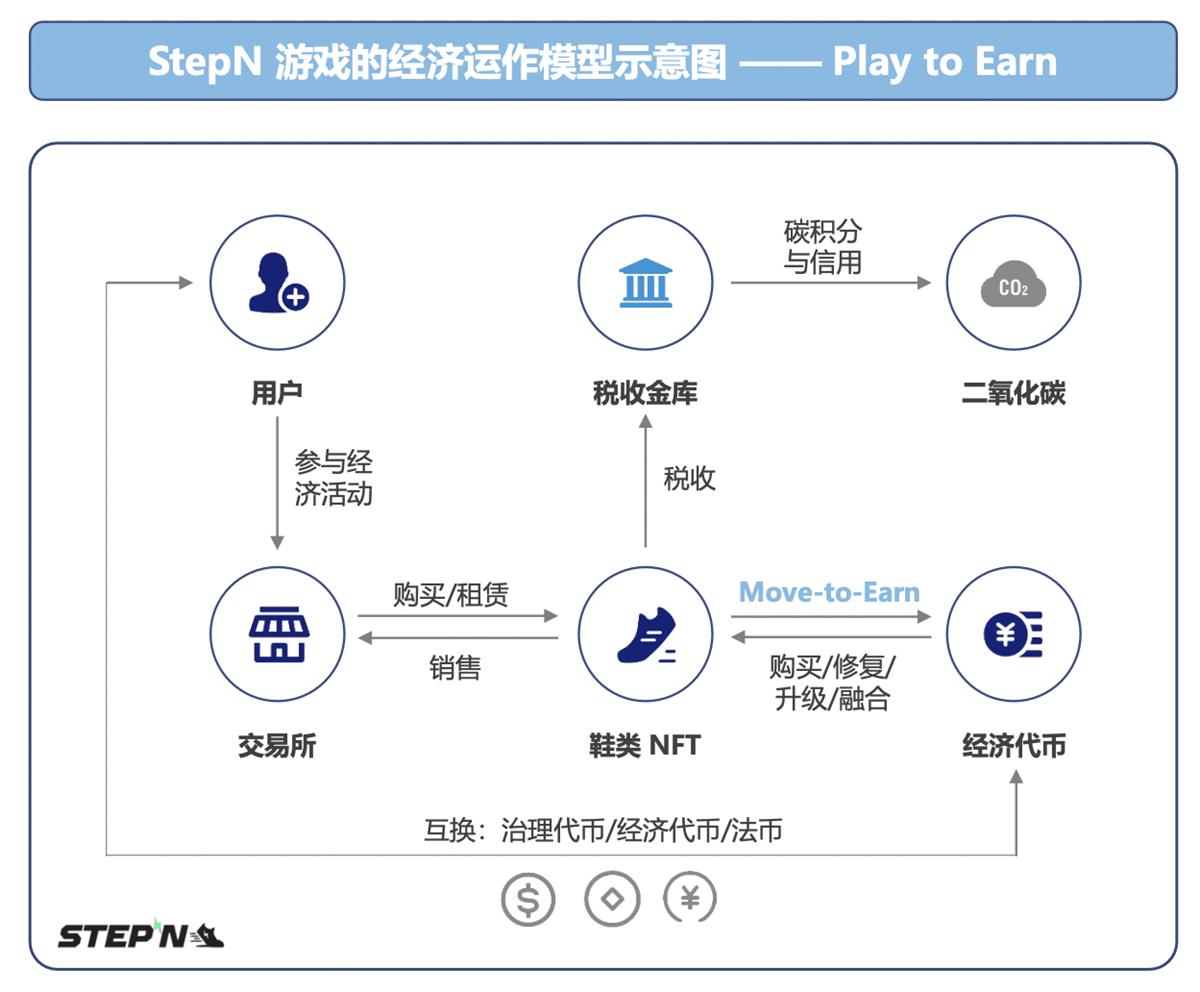
Source: José Gómez Analysis
StepN is a blockchain game that uses NFT sneakers to earn income through physical activity, expanding the gamified decentralized model to other areas. StepN was initially created on the Solana public chain and secured the fourth place in the Solana Hackathon's gaming category. The most significant feature of StepN is the integration of GameFi with offline physical activity through the Move To Earn model. After users download the app and successfully register, they create a new in-app wallet, transfer cryptocurrency SOL or BNB into the wallet, and purchase a pair of NFT virtual sneakers to start earning money through outdoor running. The amount of earnings depends on the user's physical activity and the attributes of the sneakers. The sneakers have different attributes, types, qualities, and levels. Users can earn unlimited minted game tokens GST by running within the effective energy time range corresponding to different sneakers' pace ranges. These tokens can be used to upgrade sneakers and gems, unlock slots, forge new sneakers, or directly exchange them for stablecoins.
At the current stage, Web3 games have reached a new level in terms of gameplay, game content, and artistic production, but still have a significant gap compared to traditional games. In terms of tokenomics design, some Web3 games have effectively utilized the Pareto's income model to quickly attract new users, achieving a rapid network effect. From a time perspective, it is expected that in the next 1-2 years, Web3 games in specific subfields will rapidly improve in content creation and playability, surpassing previous Web3 games in terms of user volume and game user spending. The following is a brief analysis of the experiences and lessons brought by past Web3 games.
Problems with Web3 Games
Lack of Playability and Fun, Inability to Retain Users
The fun in game design does not necessarily mean being completely humorous or creating joy, but rather refers to the entertainment experience and the pleasure players feel. Creating fun involves three key steps, similar to how potential customers are attracted to a game store. First, customers' attention is drawn to the game screen, where visual elements such as background, graphics, appearance, characters, and types play a primary role in attracting customers (players). Second, customers (players) try the game and make judgments. At this stage, gameplay and content quality are crucial. The game must immediately make players feel pleased and not generate any aversion through its excellent playability and outstanding performance. The goal of the trial phase is to make players feel the joy of the game in a brief experience. Finally, the game needs to continue to provide pleasure and satisfy players' desire for the game, making them addicted. Game developers must cleverly design game content, rhythm, structure, immersion, and playability to maintain players' continuous pursuit of fun. Playability is a comprehensive issue that needs to consider various aspects such as game content, interaction, socialization, challenges, and rewards. Through continuous improvement and innovation, game developers can continuously enhance the playability of the game to attract and retain users. Creating fun is an important topic in game development, focusing on the three steps mentioned above and emphasizing the game's attractiveness and playability.
Pareto's Token Economic Model Leads to Token Dumping and Price Instability
The "robbing Peter to pay Paul" DeFi economic model requires continuous entry of new users, and users' capital investment is used to support the prices of NFTs and tokens, fully leveraging the investment attributes to encourage players and arbitrageurs to enter. Once the marginal number of users decreases and is insufficient to support the prices of NFT assets and token tokens, the consistent expectations of players and investors resonate, amplifying the emotions of greed and fear, accelerating the rise and fall of token prices. In this process, the significant rise and fall of token-priced assets greatly affect the gaming experience of players. From the perspective of tokens, as a general equivalent for exchange and a carrier for wealth transfer (i.e., wealth does not appear out of thin air), if the pricing exceeds the mean value of its assets, it shows the asset bubble brought about by emotions. At the same time, if NFT assets with liquidity are linked to the economic and numerical systems within Web3 games, the planning of Web3 games becomes a great challenge. Currently, some projects have adjusted their internal economic systems using three-token and four-token models. However, the quantity of tokens is not the key to solving the problem. Increasing the quantity of tokens will increase the friction cost of the in-game economic system, but it does not substantially solve the correspondence between assets and tokens. The key to solving the problem lies in addressing the asset system, economic system, and utility corresponding to the tokens. In terms of the asset system, the NFT asset model lacks sufficient consumption scenarios and gameplay mechanisms. The game mechanism is the "interaction and relationship left after stripping away aesthetic, technical, and narrative components" and includes "space, time, object attribute status, action, rules, skills, and probability" as the seven elements summarized in the gameplay mechanism. In the current Web3 games, financial attributes are gradually strengthening, while the gaming and consumption attributes of Web3 games are gradually weakening. The gamification trend of DeFi has damaged the entertainment and consumption attributes of Web3 games. As mentioned earlier: wealth does not appear out of thin air. In a market of stock competition, it is impossible for everyone to make money in the game (in fiat terms).
Insufficient Attention to the Numerical System of Web3 Games
One of the most important differences between Web2 games and Web3 games is the ability to deposit and withdraw funds. In Web2 games, purchasing in-game assets such as items, skins, equipment, and pets cannot be withdrawn. If players want to sell in-game assets, they can only sell their accounts. However, for Web3 games, game assets and tokens have liquidity, and the unreasonable design of the economic system (including but not limited to development, combat, and economic values) can be exploited by various studios for arbitrage, causing economic losses to Web3 game projects. Although project teams can use methods such as time locks, exit taxes, and high staking yields, they still cannot solve the fundamental problem and will ultimately face the pressure of token dumping, leading to the overall collapse of the economic system.

Source: José Gómez Analysis
The RPG numerical system in the following figure is a case study. In various subsystems such as tasks, equipment, levels, and pets, different numerical designs for rewards, gold consumption, and time consumption need to be comprehensively considered. Additionally, in the adjustment of the numerical system of Web3 games, attention should also be paid to players' expectations for performance mechanisms, game mechanisms, overall narrative, and entertainment. The following figure roughly outlines the framework of the numerical system for RPG-type games:
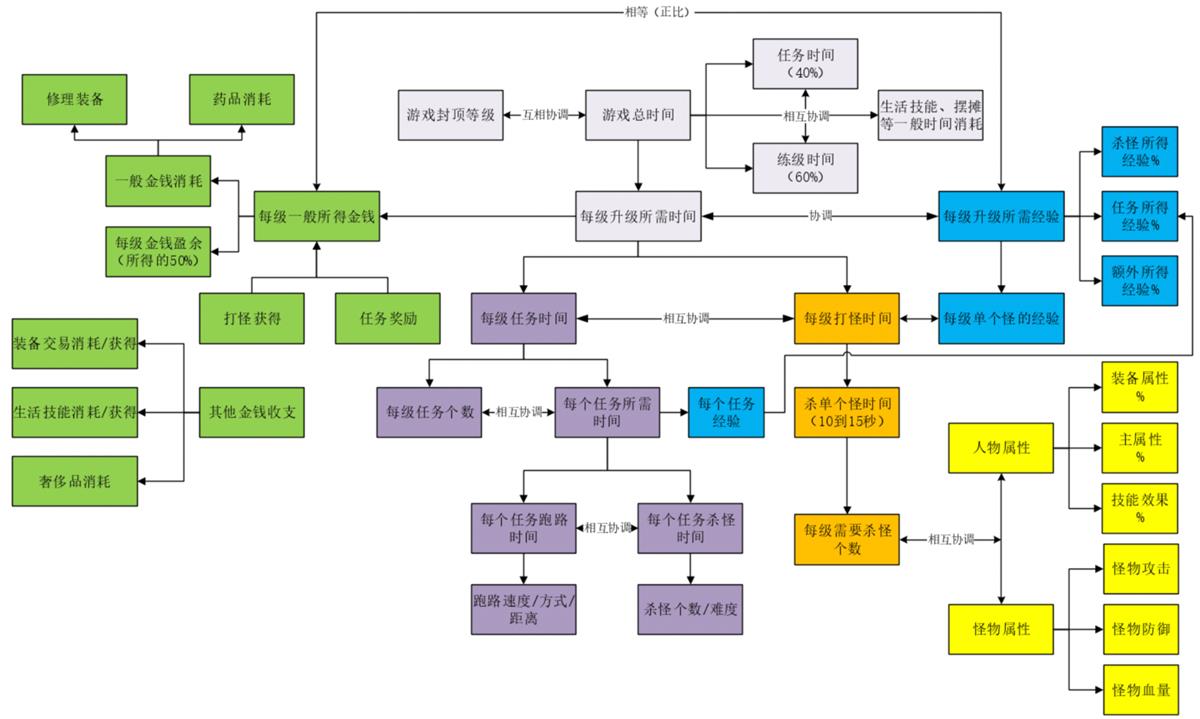
Source: José Gómez Analysis
Therefore, in the process of adjusting the numerical system for game planning, the following flow can be considered:
Research game numbers: Analyze competitors' and in-house games to improve players' gaming experience. Game numbers involve the attributes, parameters, and relationships of various elements in the game, which have a profound impact on the game's balance, difficulty, fluency, and fun experience. The development team must accurately define the attributes of characters, items, levels, skills, etc., as the numbers directly determine the behavior and interaction of players in the game world. Reasonable number settings can make the game experience more compact, enjoyable, and conducive to sustained challenge. Additionally, the balance of game numbers is a key challenge. The development team needs to repeatedly test and adjust the numbers to ensure that the interactions between various elements achieve the desired effect in the game. It is necessary to deeply understand players' behavior patterns and feedback and continuously improve and optimize. Game number research also involves economic balance and game progress control. The prices of items, distribution of rewards, and difficulty of tasks all need to be reasonably designed to challenge players in the game while not being too difficult or too easy.
Design game numbers: Use mathematical modeling, combined with theory and actual data, to continuously adjust and optimize number design. The process of number balance is not based on simple differences between numbers but is adjusted based on players' subjective experiences. Therefore, all balances are based on players' experiences. Number balance is based on subjective experience, and game number planning uses experience to deduce the logical relationship of balance results. This involves rigorous logical reasoning and emotional relationships. Therefore, balancing is not done simply for the sake of balance but to provide a better user experience through balanced number adjustments. There is no absolute balance in reality because each design purpose is different, and the results of balance will vary accordingly. Designing combat numbers, development numbers, and economic numbers for games, building a global number model, and ensuring the playability, balance, sustainability, and scalability of number design. Regarding number design, there are generally several steps. First, find various attributes in the game, whether explicit or implicit. Then, deeply study the laws and ways of change of these attributes, explore their possible mathematical formulas and relationships. Next, use graphical tools to verify whether these results meet expectations and whether further editing and adjustment are needed. All design decisions are made to optimize the game experience.
Optimize game numbers: In the future, the numerical planning of Web3 games needs to pay more attention to graphical tools and the process of reflection. Graphical tools can intuitively present results, helping to understand data and trends. Another important aspect is reflection, thinking about why specific practices are adopted, the purpose of these practices, and whether the ideas are in line with the expectations and original intentions of game development. Additionally, the design should be simple and elegant, rather than pursuing complex and confusing settings. Balance and number tools are only auxiliary means, and the goal of the game is to design better experiences to meet the needs and expectations of players and users. Therefore, the starting point should always be the user experience of Web3 games, focusing on creating simple and effective solutions to make game or product design more elegant and satisfying.
After José Gómez's analysis and experiencing over 30 games, it was found that Web3 games with high playability are relatively rare, with only a small number of Web3 games generating positive retention income and capital gains. The following is a brief analysis of one representative Web3 game with high playability—Matr1x. The game is scheduled to be launched on August 8th, and interested players and users interested in the Web3 game industry can try it out.
Matr1x: Innovator and Pioneer of Web3 Games
Matr1x is a brand new Web3 game. As a cyberpunk-style FPS shooting mobile game, it boasts high-quality game graphics. Matr1x focuses on PVP multiplayer fair competition and also provides strategic casual PVE gameplay modes. Additionally, it covers offline crowds by hosting various Matr1x events to enhance player identification and consensus. The following is a brief analysis of the Matr1x shooting game project from multiple perspectives.
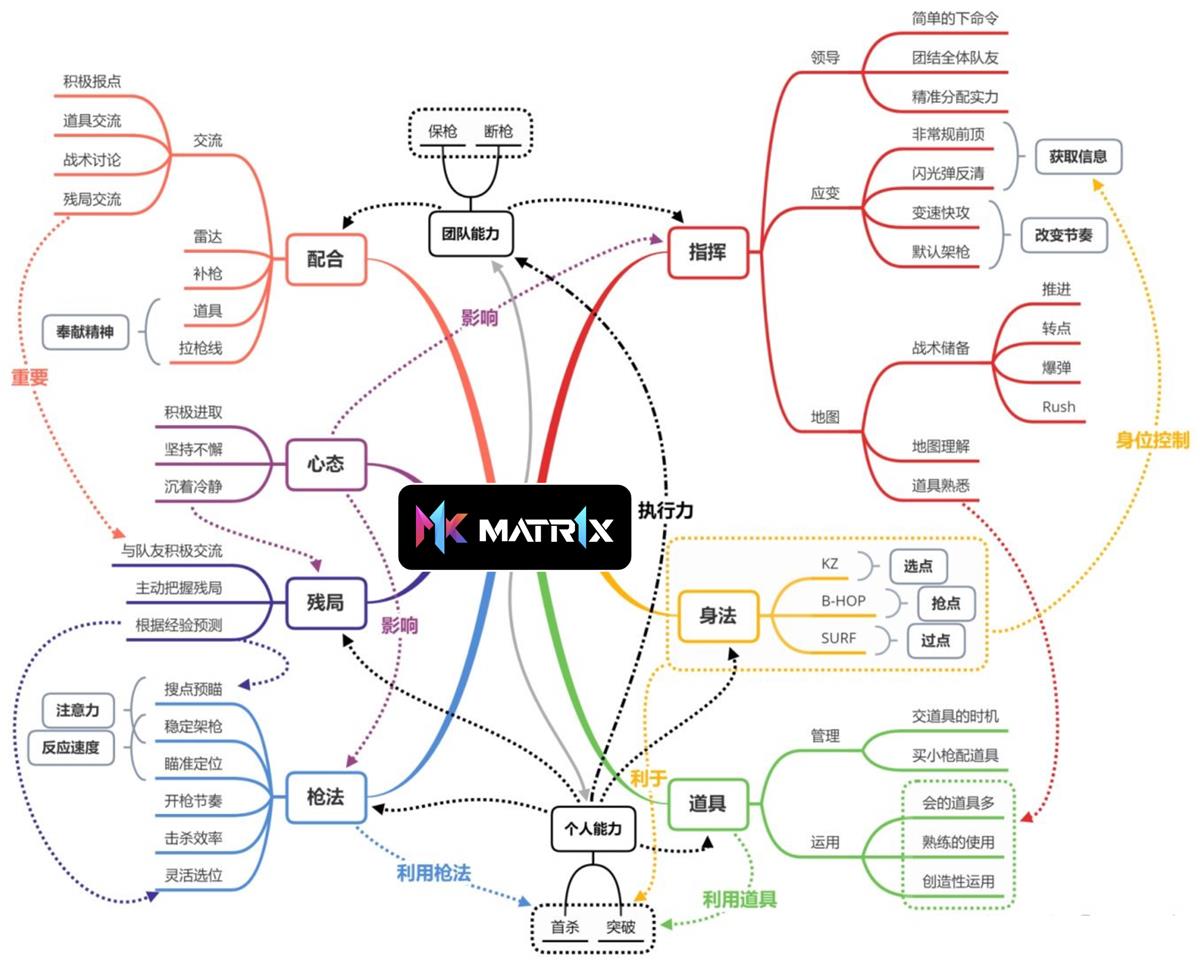
Source: José Gómez Analysis
- Game Players in the Market: Coverage of players in the shooting game subfield -------------------------
According to data company statistics, shooting games have been a very important category in mobile games over the past few years, ranking as the sixth largest game type in the US iOS market and generating approximately 6% of market revenue. Although there hasn't been a new hot shooting game in the market for some time, the previous success of "Call of Duty Mobile" has stimulated many AAA developers to turn to the mobile platform. It has been over two years since the release of the last hit shooting game, and several leading developers are launching promising competitors, including the mobile versions of "Fearless Contract," "Apex Legends," "Battlefield," and "Final Fantasy 7: The First Soldier." The lack of fresh blood injected into the shooting game market in recent years has also created an expectation for a highly popular shooting game in the current market.
The following image provides a simple comparison of mainstream shooting games in the current market. The main difference between the top shooting games is that "Call of Duty Mobile" and "PUBG" have stronger social aspects, with complete guild and cooperation mechanisms in the game, while the guild mechanism in "I Want to Live" is relatively simple. Additionally, "PUBG" further explores the driving factor of "exploration: treasure collection" through the "exhibition hall" and "seasonal exhibition hall" collection systems. The top three shooting games in terms of market share are "I Want to Live," "Call of Duty," and "PUBG."
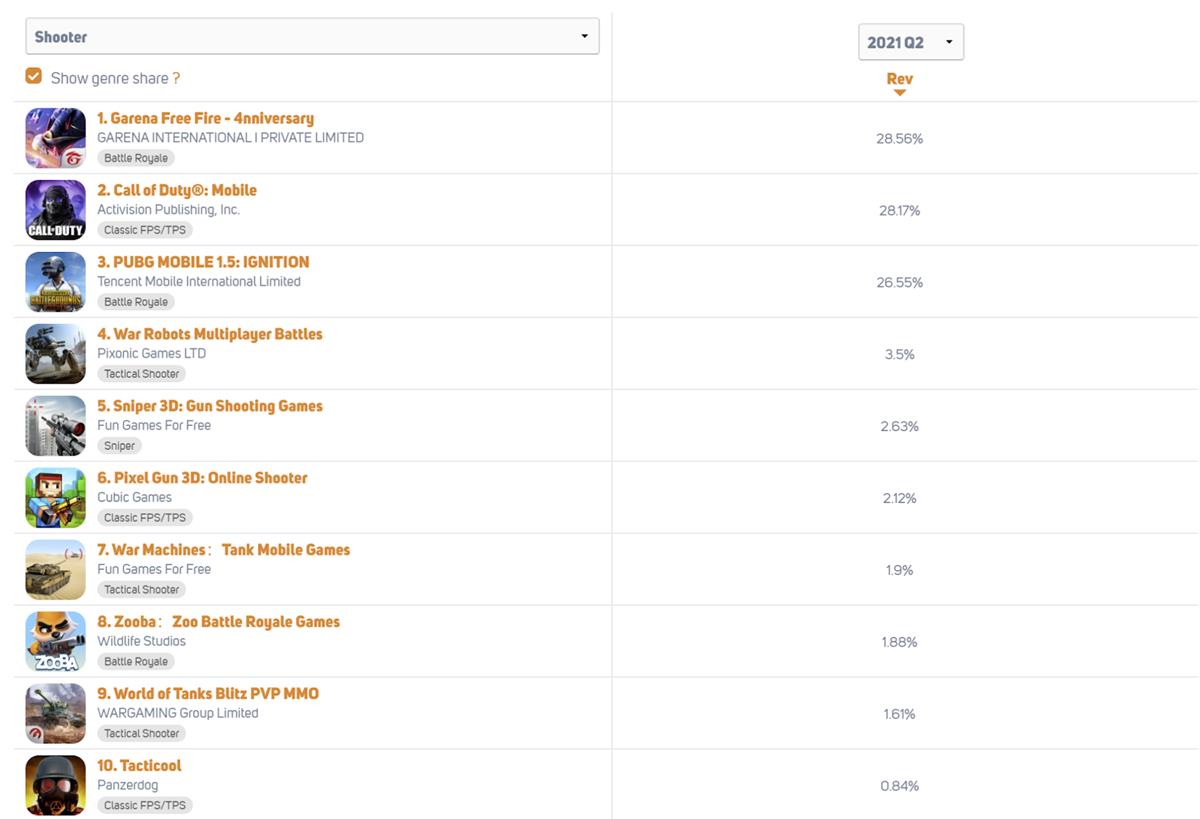
Source: GameRefinery
From the perspective of players, according to a survey by GameRefinery of over 7,000 respondents, the motivation factors for shooting game players include various types, with social attributes (cooperative combat and confrontation), skill attributes, and entertainment attributes (excitement and pleasure) being the main factors that shooting game players care about. Exploratory factors (including collecting items and exploring maps) and expressive behavior are secondary influencing factors. In comparison with the top three shooting games, all of them focus on these factors in game design.
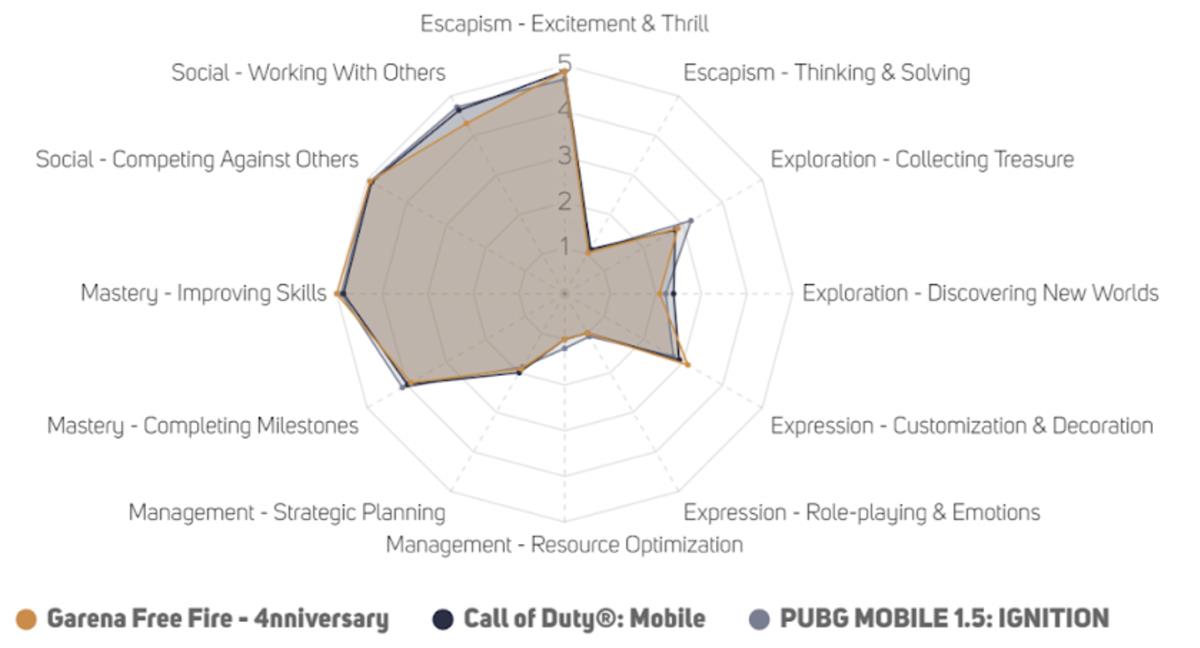
Source: GameRefinery (survey respondents are smartphone users representing different ages, genders, incomes, and family sizes in Western English-speaking countries (United States, United Kingdom, Canada, New Zealand, and Australia))
- In-Game Gameplay and Experience: Game Mechanism and Level Design ------------------
Layout and Route: The map provides players with rich shooting and strategic gaming experiences. Under this premise, the map design style can be diverse, including three-lane designs (Dust2, Cache, Mirage) and asymmetrical designs such as Inferno, Nuke, and Vertigo. The main paths are the core of the game and must achieve the map's objectives to ensure smooth action. Once the main paths and blocking points are determined, connections and loops can be considered. Players do not want to spend too much time searching for paths; they want to reach their destination faster and feel in control of the game. Therefore, Matr1x ensures that each area is connected, usually by connecting paths to several main paths, providing players with strategic and gaming opportunities. Players can approach other main paths based on information reports, and criminals will not return to the spawn point to restart their mission due to a change in objectives. Police can return to defense faster through connecting paths. At the same time, the game's pace is relatively fast, and the time to reach the first shooting position is similar for different routes, which can increase players' attention and immersion in the game.
Design and Planning of Blocking Points: Blocking points are key positions where criminals often encounter police resistance on the target route, dividing the map into different areas. Compact paths, such as connecting paths, corridors, tunnels, and doors, are usually used. Criminals must break through these points to control the area behind the blocking point. The timing of the blocking point is crucial, as both sides arrive almost simultaneously. Therefore, when designing the map's blocking points, Matr1x considers the number of entrances and exits, the transition area of the blocking point, the arrival time of both sides, the attack values of both sides, and the tactical situation. In the design, Matr1x provides blocking points with two entrances for both sides, offering more strategic and gaming space. Players can throw, assault, wait, engage in gunfights, and plan the next tactical move in relatively safe areas to better adapt to the situation. Additionally, multiple combinations of cover are set in the same location, allowing players to quickly take cover and stimulate their tense emotions during a series of actions such as planting bombs and quickly evading, in case they are discovered by enemies.
Vertical Space: In the Matr1x game, characters cannot fly, and shooting is inaccurate when jumping, so 80% of the combat occurs in horizontal shooting areas. Therefore, players' differences in horizontal space are mainly reflected in their understanding of vertical space. Players can stand on chairs to see parts of the opponents' heads, and even stand on boxes through big jumps. Making full use of the vertical space increases the options and possibilities for attacks. Therefore, controlling jump height and the height of colliding objects is an important detail for Matr1x designers. The game encourages players to cooperate and make good use of the vertical space. On one hand, this increases the fun; on the other hand, it greatly deepens the uncertainty in the game, transforming it from a rigid occupation battle into a special combination of risk and reward. In some maps of Matr1x, multiple rotational jumps are required, and failure will result in falling down and missing the opportunity, making it easier to be discovered by enemies. However, if successful, players can occupy the area in front of the blocking point, catch the enemy off guard, and coordinate with teammates. The importance of vertical space in the game is fully demonstrated through tactical cooperation and utilization.
Design and Selection of Target Points: After the attack and defense are exchanged, the police can launch an attack from any entrance. Matr1x not only considers the cover needed by the CT to defend the T at the target point but also must consider the cover needed by the T to defend the CT after planting the bomb. Therefore, Matr1x carefully designs the T's defensive positions, covering key areas near the target point and connecting channels. However, even with cover, it cannot completely block all attack angles from the enemy. At least one angle and entrance that the enemy can use must be retained, guiding players to engage in closer teamwork and strategic choices. This design requires close cooperation between players, rational allocation of positions and roles to ensure comprehensive defense. At the same time, when attacking, players must carefully consider the most effective path and tactics. This complex and advanced design enriches the gaming experience of Matr1x, requiring players not only to react quickly and shoot accurately but also to use tactical wisdom and teamwork to achieve victory in this challenging game world. In the battlefield of Matr1x, intelligence and skill are equally important, which is the reason why many players pursue excellence.
- Design of the Game's Numerical System ---------
Attributes and Numbers: In FPS games, attributes and numbers are common elements in game design. In FPS games, attributes such as gun count, bullets, firing rate, reflexes, and spread are important factors that affect the gaming experience and player strategies. In FPS games, precision in shooting, bullet trajectory, and target hits are emphasized, with point attacks (single bullets) and area attacks (explosive bombs) existing. Some characters may have attacks targeting single targets, while others may have area attack skills. The map design of Matr1x has been refined over time and with reference to a large amount of gameplay data, gradually approaching the ultimate balance, with many design concepts and level details worthy of scrutiny. The following are analyses of several important elements.
TTK (Time to Kill): The time required to kill an enemy after firing all bullets (TTK). The shorter the TTK, the higher the theoretical strength of the firearm. The main factors affecting TTK include base damage, firing rate parameters, distance decay functions, penetration decay functions, armor decay functions, and defensive parameters of the hit parts. However, in actual combat, there are many other factors that affect the actual TTK. For some dual-wield weapons and shotguns, the number of bullets consumed per shot is higher, and actual damage = single shot damage * number of bullets. The smaller the firing interval between each bullet, the faster the firing rate, and together with the damage, they constitute the theoretical TTK. Usually, to maintain overall TTK balance, firing rate and damage need to be balanced. In addition, distance decay occurs as the combat distance increases, leading to damage decay with distance.
Bullet Trajectory and Muzzle Velocity: The theoretical TTK of a firearm determines the upper limit of its strength, while the bullet trajectory determines the lower limit of its strength and also affects the difficulty of achieving the actual TTK compared to the theoretical TTK. When considering bullet trajectory and muzzle velocity, several influencing factors are involved, including but not limited to: recoil (horizontal and vertical), burst mechanism, spread parameters (including random settings and spread parameter corrections), etc. These factors collectively shape the performance of firearms in actual combat and the challenges players face when using them.
Crosshair: In FPS games, the crosshair is an important element for visual cues and feedback. The design parameters of the crosshair include color, spread, offset, hit feedback, and other feedback factors. When designing the crosshair, the Matr1x team considered many detailed factors, such as the consistency of the crosshair spread speed with the firing action, the consistency of the crosshair reduction speed with the firing recoil, and the matching of the spread area with the crosshair gap. For advanced players, the Matr1x team delved into the experience of controlling recoil, where different firearms have different offset ranges. For non-spreading crosshairs, players visually perceive that the spread does not increase, enhancing the operational feel. The ultimate non-spreading crosshair can even clearly display the trajectory formed by the bullet marks, helping players control recoil better.
Mobility: Mobility plays a crucial role in FPS games, covering aspects such as movement speed (including initial displacement speed and acceleration), weapon switching speed, reloading speed/ammo capacity, and aiming speed. In the game Matr1x, the level of mobility directly affects the player's experience in the game. For example, when a character is on the ground, the movement speed when switching weapons will change to the corresponding weapon's aiming movement speed. However, if a weapon is switched in the air, the character will maintain the movement speed of the previous weapon until landing. Additionally, speed is not instantly switched during start and stop; it requires consideration of the corresponding acceleration and deceleration. The magnitude of acceleration and deceleration directly affects the sense of control in movement, and both being too large or too small will affect the flexibility of operation.
Other: Art, Sound Effects, and Game Events (Esports Events)
In the game, players need an immersive and enjoyable experience. Therefore, in the game production process, not only game mechanics and gameplay need to be considered, but also other factors such as art and sound effects. Additionally, offline events can enhance the consensus and identification of game users and NFT holders. The following is a brief analysis of art, sound effects, and game events.
Visual and Art: The design of Matr1x maps is highly unified, using saturated daytime colors to create a clear and bright game environment. In the planning of map paths, emphasis is placed on smoothness, with guide signs set up to allow players to easily find the direction and target location. This design not only provides better game navigation but also enhances the playability and convenience of the game. The maps in Matr1x are vast and delicate, cleverly adding elevation differences to create undulating terrain, giving the map a rich sense of depth. This not only allows players to experience diverse landscape scenery in the game but also provides more choices for combat and tactics. Elevated areas in the map can serve as advantageous positions, allowing players to use elevation differences for concealment and ambush, adding tactical depth and a tense and exciting atmosphere to the game. The map design of Matr1x also incorporates some interesting interactive mechanisms, waiting for players to actively explore and discover. These interactive mechanisms may be hidden treasures or special mechanisms. This design increases the exploratory nature and playability of the game, attracting players to uncover the map's secrets and surprises.
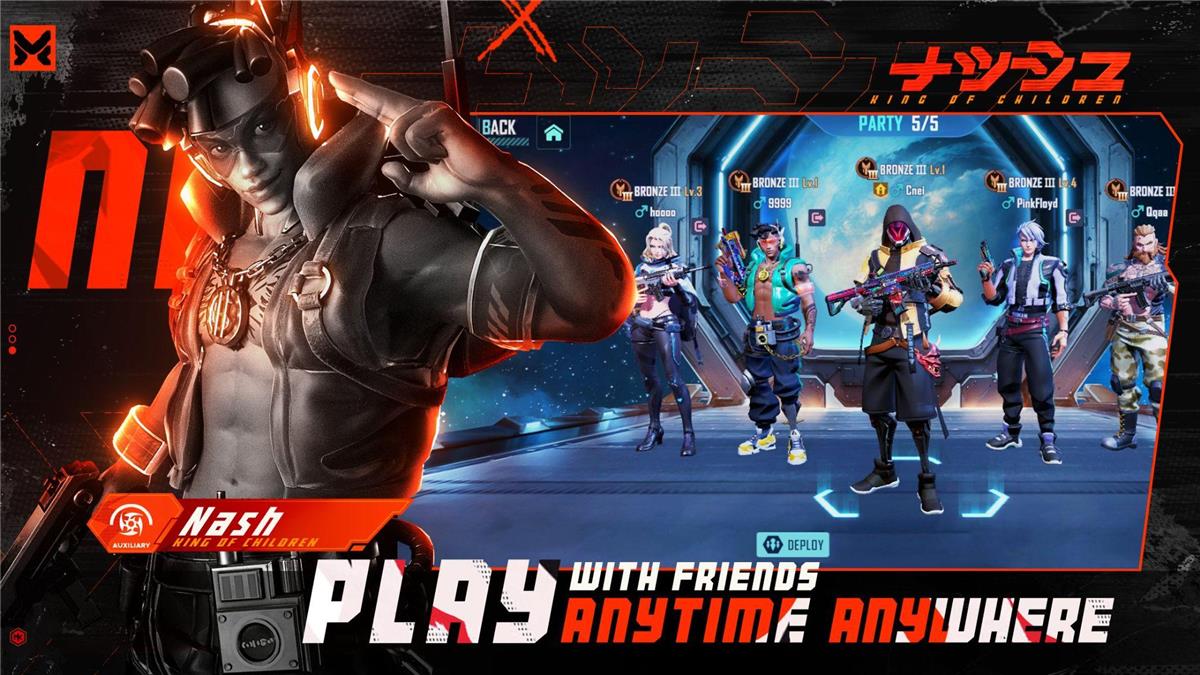
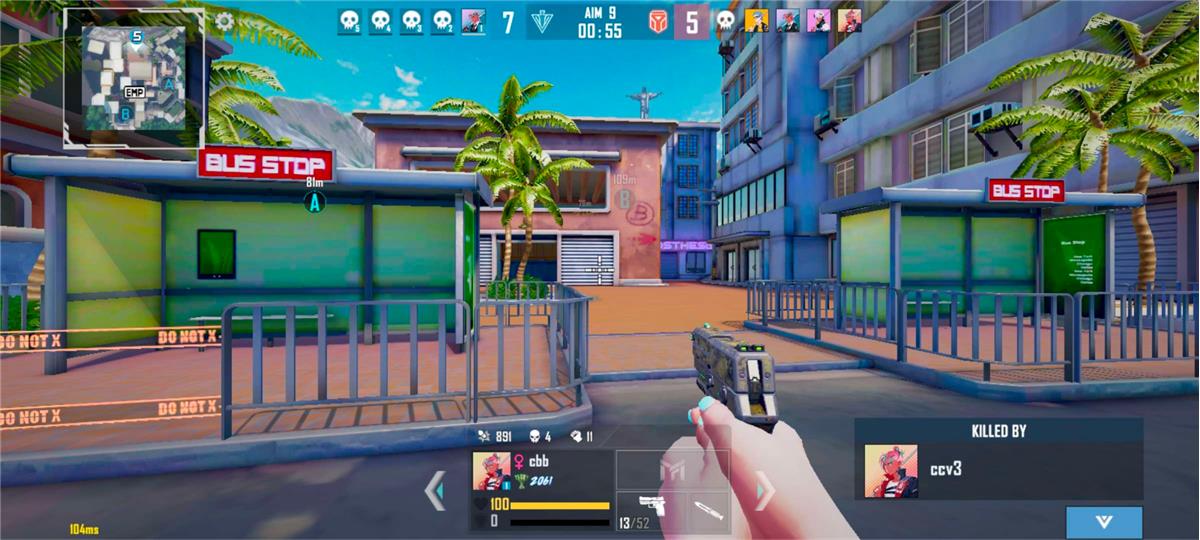
In the design of buildings, obstacles, and cover, Matr1x cleverly uses vertical and horizontal lines and angles to create a more realistic scene, enhancing the player's immersion. Every design is carefully considered to make players feel as if they are truly present in the game, reducing the sense of abruptness caused by artificial interference and making the game experience more natural and smooth. The visual obstruction effect appears behind cover for the opposing sides in the Matr1x map, adding a tactical effect of surprise to the game. Players can use visual obstruction to conceal their position, create illusions, or ambush enemies, adding strategic and surprising elements to the game.
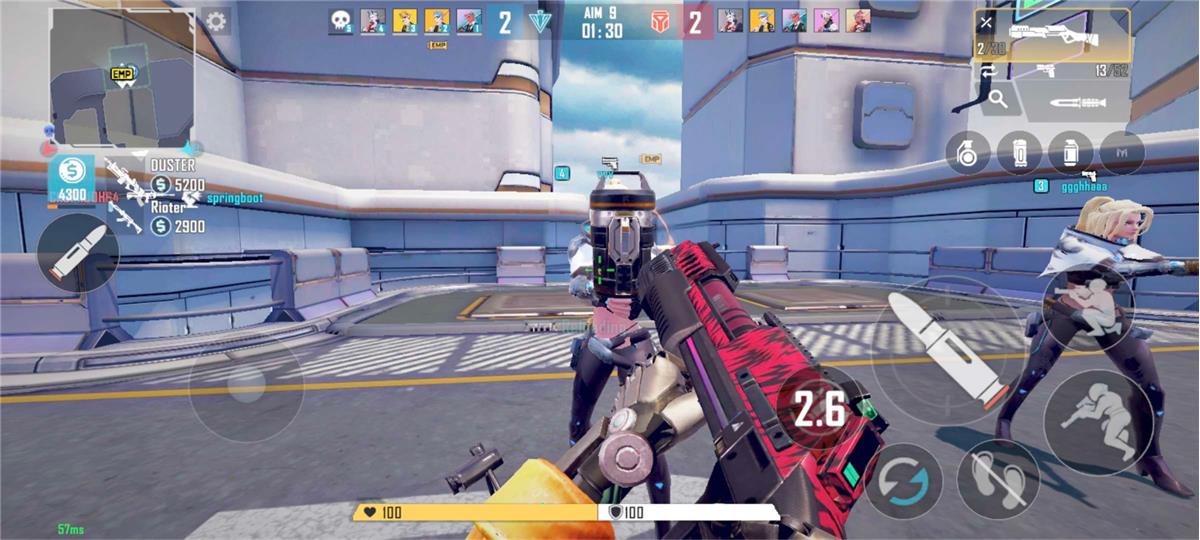
In terms of equipment design, the firearm design is highly realistic and detailed. Various firearms in the game are highly restored based on real firearms. The appearance, details, and textures of the firearms are carefully designed, allowing players to feel the texture and weight of real firearms in the game. Additionally, the firearm skin system in Matr1x provides players with a wide range of choices, allowing each firearm to have a different appearance, meeting the personalized needs of players and driving the game's economic system. Furthermore, the design of ammunition and accessories is also very detailed. Ammunition boxes, magazines, scopes, and other accessories in the game are vivid, adding more details and realism to the game. The design of accessories not only considers visual effects but also integrates with the game's mechanics, affecting players' tactical choices and combat strategies. Props in the game, such as grenades, flashbangs, and smoke grenades, are given unique visual effects, making the combat scenes more vivid and diverse. The design of these props not only considers visual effects but also affects the game's tactical gameplay and teamwork.
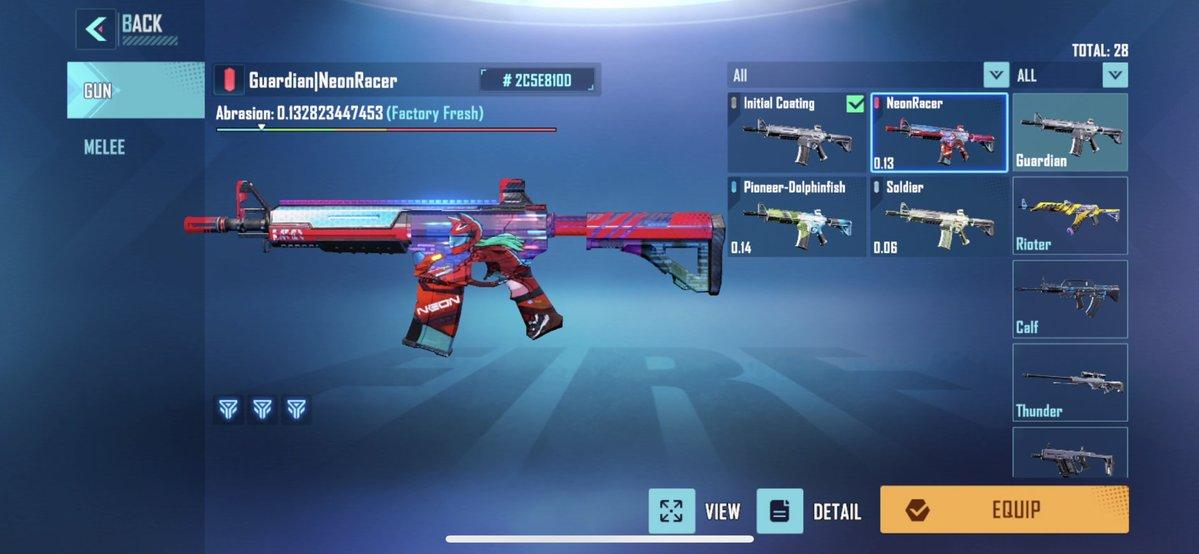
In character design, Matr1x demonstrates a high level of attention to detail and creativity, making the 2061 gunfight character images sold deeply loved by players. The character images in the game are diverse and distinctive, with each character having a unique appearance, clothing, and accessories, making them appear highly individual in the game. The development team has carefully crafted the characters' facial expressions, postures, and movements, allowing players to experience more realistic character performances and immersion in the game. The character design of Matr1x also focuses on the game's background and storyline. The accessories of different characters match their backgrounds and identities, adding to the game's storytelling and immersion. Players can feel the style and background of different warriors when choosing characters, adding more emotions and fun to the game. As of August 6, 2023, the NFT floor price of Matr1x has increased from 1.08 ETH to 1.59 ETH in the past month, with an increase of 47.22%.
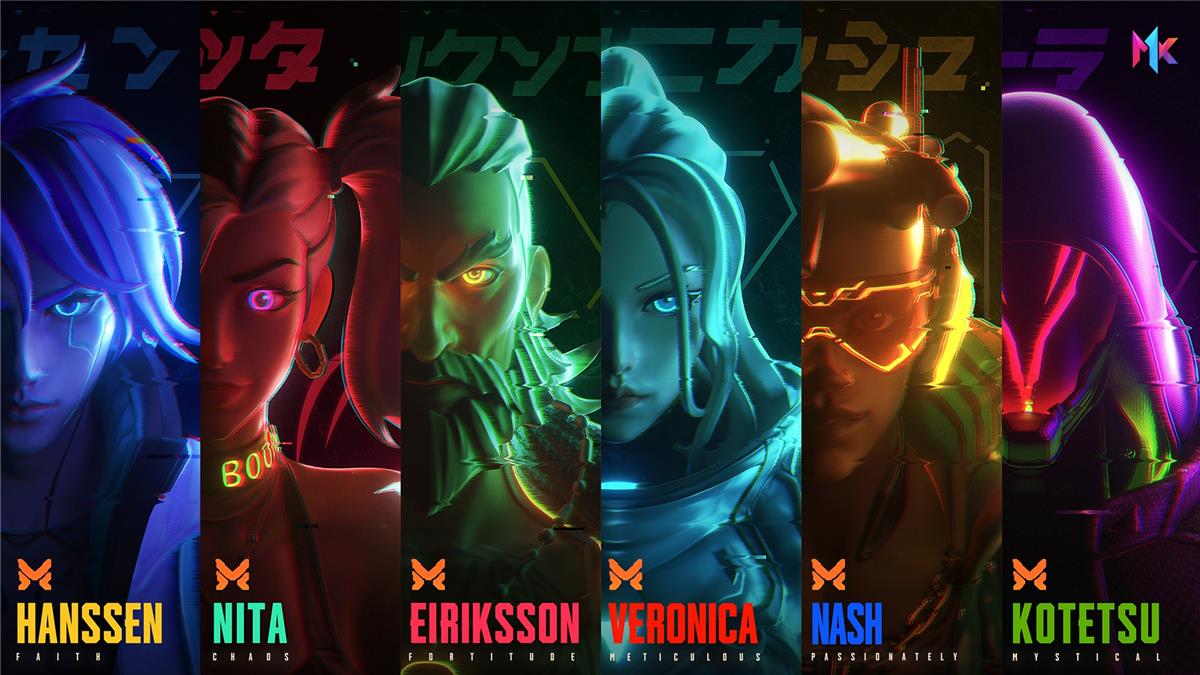
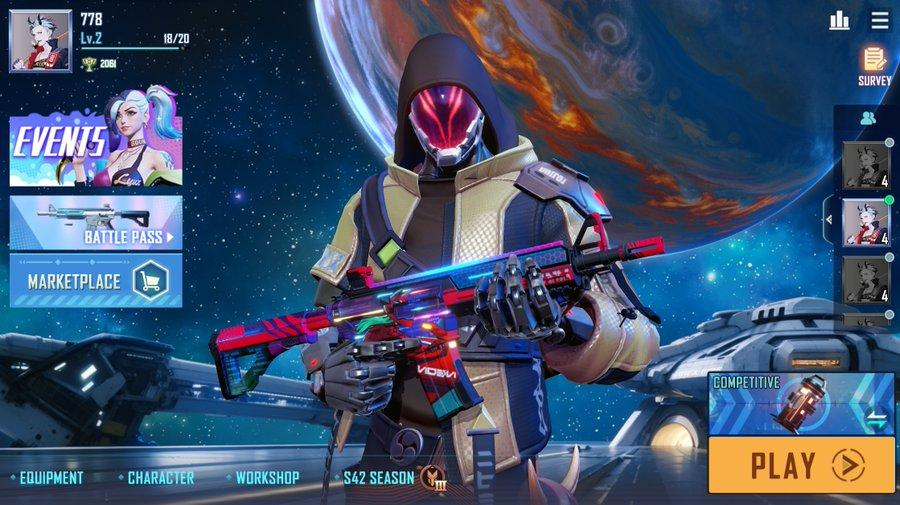
Auditory and Sound Effects: In terms of auditory effects, the design of Matr1x maps takes into account detailed sound propagation effects. Each position is accurately marked with the types of sounds that can be heard, such as door opening sounds, footsteps, and gunfire, and implements sound attenuation effects through careful design. This attenuation effect allows players to accurately perceive surrounding sounds at different distances and behind obstacles, increasing the game's tactical nature and immersion. In Matr1x, even the material that produces sound when footsteps are taken is given attention. By changing the material on which the character's footsteps are taken, such as hard floors, grass, or sand, the sound of footsteps produced by players when moving will differ. This detailed design makes the environmental sounds in the map more realistic and vivid, making players more alert during combat with enemies, as different terrains will affect the footsteps heard by the enemy, leading to more interesting tactical choices. By listening to the enemy's gunfire or footsteps, players can infer the enemy's position and intentions, making wiser decisions. This auditory design not only increases the game's tactical depth but also provides players with a richer gaming experience.
Offline Game Events: Additionally, Matr1x actively holds multiple game events and esports events offline, providing global Matr1x players with opportunities to interact with the real world. These events cover different types and scales, attracting the participation of many gaming enthusiasts. In regional offline events, the Matr1x team collaborates with community members to host a series of interesting activities. These activities not only provide players with the opportunity to interact face-to-face, enhancing community cohesion, but also form a close-knit gaming social circle. Through these diverse offline game events and esports, Matr1x not only expands the game's influence but also deepens the emotional connection between players and the game. This all-encompassing interaction and communication have built a vibrant and passionate gaming community for Matr1x, allowing it to occupy a place in the competitive gaming market. In the future, Matr1x is committed to creating highly renowned esports events, attracting many top professional players and gaming clubs to participate. These events cover multiple game modes and competitive types, such as individual duels and team battles, providing players with a stage to hone their skills and compete. The exciting performances of these events will also attract a large number of viewers and fans, adding sparks to the renown and influence of Matr1x and bringing more surprises and enjoyment to players' gaming experiences.
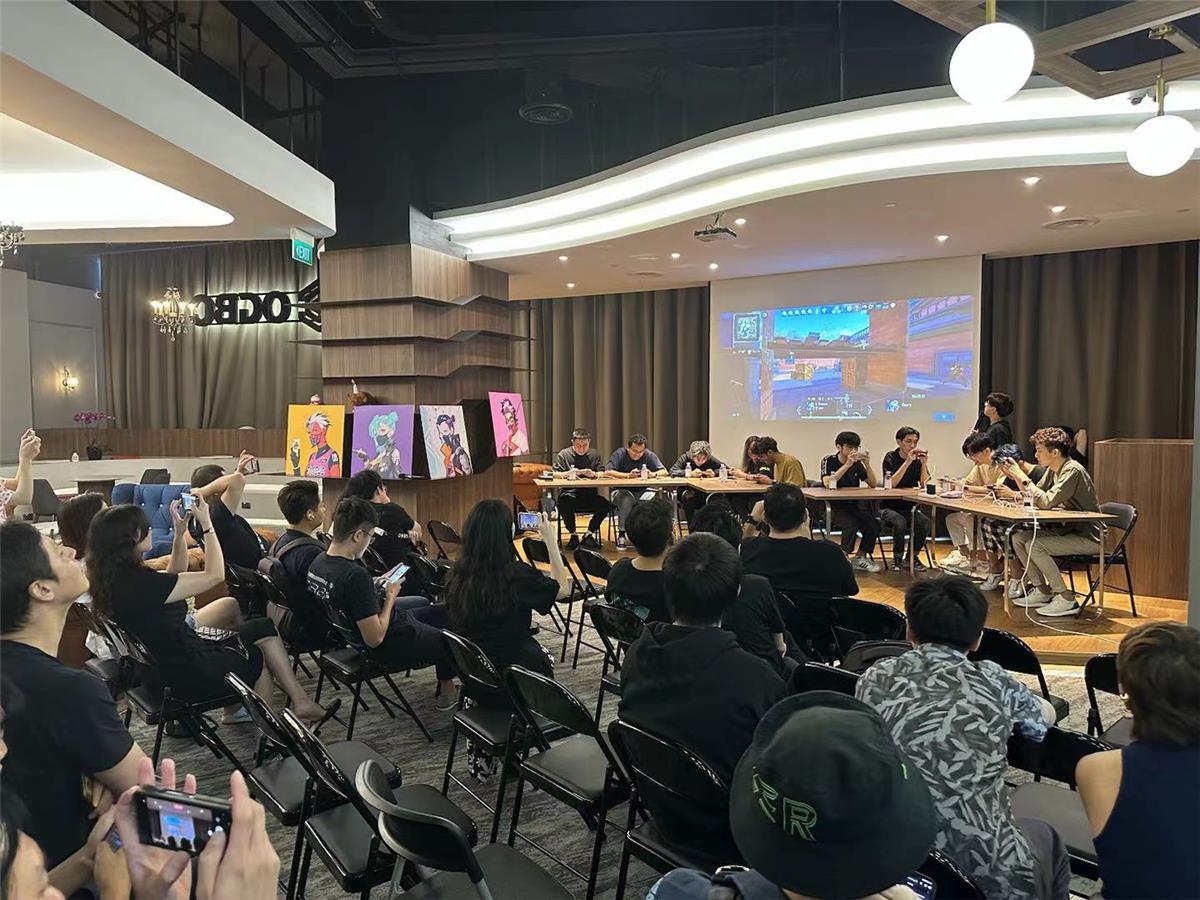
In summary, Matr1x is an innovative work that transcends the traditional gaming category of Web2, introducing a new digital economic model that provides players with an unprecedented gaming experience. In this creative and imaginative gaming world, players can fully immerse themselves in the fun and excitement of the game and also have the opportunity to realize actual profits through gaming and trading. Players can freely trade inside and outside the game, creating a new value conversion mechanism for players. Additionally, Matr1x encourages players to actively participate in community activities and esports, showcasing the talents of players and the strength and level of teamwork. Furthermore, Matr1x breaks the boundaries of traditional games, cleverly integrating games with blockchain technology, breaking the constraints of Web3 game development, and lighting a feasible path for the development of other Web3 games.
免责声明:本文章仅代表作者个人观点,不代表本平台的立场和观点。本文章仅供信息分享,不构成对任何人的任何投资建议。用户与作者之间的任何争议,与本平台无关。如网页中刊载的文章或图片涉及侵权,请提供相关的权利证明和身份证明发送邮件到support@aicoin.com,本平台相关工作人员将会进行核查。




